

T HE A RT OF M ENTORING
Lead, Follow and Get Out of the Way
by Shirley Peddy, Ph.D.
Copyright 2001 by Shirley Peddy
All rights reserved. Copyright under International, Pan American, and Universal Copyright Conventions. No part of this book may be reproduced, transmitted or utilized in any manner whatsoever, without written permission from the author or publisherexcept for brief quotations embodied in critical articles or reviews.
B ULLION B OOKS
9597 Jones Rd. 258
Houston, Texas 77065
The organizations and characters in this book are either the product of the authors imagination or a combination of many people and many experiences in many organizations. Any resemblance to a specific company or individual is purely coincidental.
Publishers Cataloging-in-Publication
Peddy, Shirley
The Art of Mentoring: Lead, Follow and Get Out of the Way / by
Shirley Peddy, Ph.D. 2nd edition.
p. cm. ISBN 0-9651376-6-X I. Mentoring in business. 2. Business. 3. Success Psychological Aspects. I. Title. DDN 658.3124 HF 5385 LC 98-92757 Book Design by Morgan Printing Jacket design by Dorothy Wachtenheim

Printed in the United States of America At Morgan Printing in Austin, Texas D EDICATION To all those who teach, role model, coach, tell stories, explain, listen, counsel, ask the right questionsto a group of one, and to those special mentors who are a continuing source of support and inspiration to me: Jody Heymann Red Peddy Donald E. Stanford George V. Sherman, Jr.
P REFACE
Most people skip the preface of a book. This introduction is written for those who want to know:
 Why mentoring is needed
Why mentoring is needed
 Why The Art of Mentoring is written as a story
Why The Art of Mentoring is written as a story
 Who the book is for
Who the book is for
 How to use it
How to use it
One good reason for taking a few minutes to read the preface, and Ive made it short, is that it may help you decide if the book is for you or your organization.
Why Mentoring Is Needed
The wave of corporate downsizings of the early nineties was greeted with euphoria by Wall Street and enthusiasm by corporate shareholders. In its wake it has left alienated survivors who no longer count on lifetime employment with one company. While organizations expected that as the inevitable price of terminating large numbers of people, most were convinced that the remaining employees lost loyalty would be more than compensated by renewing their commitment to learning and personal growth. Career classes were transformed into professional development workshops that exhorted employees to use their jobs to build their rsums and showed them how to manage their own careers. The students listened, and they understood.
Today, just as the demand for knowledge workers is increasing, organizations are helplessly watching the exodus of three-to-five year employees who regard their companies merely as stopping places along their career paths. These former employees have discovered the way to get promotions and higher salaries is to change employers. One three-year employee, who has since left, told me, I didnt know what was wrong. As soon as I got to know people, they were gone. I finally decided I was making a mistake by staying.
The new employees hired to replace those who leave come from a younger, more diverse group, many of them products of a public education system under siege. (For more on this subject, read ). They enter organizations on the verge of expansion without the benefit of the mentoring elders who departed after taking advantage of lucrative packages offered during the downsizings. Thus, they do their jobs never appreciating the culture and values of the organization they have joined. In time, they too join the exodus. Leaving a company where you do not feel at home is easy.
While mentoring cannot be expected to rebuild company loyalty, it can help restore in many employees a sense of connection to their organizations. It should not be assumed that even if a company is aware of its value that mentoring will automatically take place. In some companies, mentors are provided to a select few; in most, mentors are neither encouraged nor honored. Yet corporations, small businesses, universities and volunteer organizations are gradually coming to the realization that you train people in a group, but you save them one by one. The purpose of The Art of Mentoring is to show those interested how to foster a mentoring culture in which people are respected and rewarded for helping each other succeed.
Why The Art of Mentoring Is Written as a Story
In his powerful book How to Argue and Win Every Time attorney Gerry Spence writes, Storytelling has been the principal means by which we have taught one another from the beginning of time. What is mentoring but one person sharing the wisdom of his experience with another? That is one reason it is an art.
People learn in different ways. Some people enjoy stories; others prefer their information in a more structured form. Those who prefer structure may want to focus on the summaries at the end of key chapters. These are called Notes to Mentoring File and may be accessed easily through the Contents. Whatever your choice, I hope you gain practical insights and ideas from reading this book.
Who This Book Is Written For
The first edition of The Art of Mentoring was meant for managers, human resources professionals, and training consultants whose organizations were involved in mentoring. It applied equally to small businesses, universities, and professional organizations.
Today, organizations and institutions recognize that while their focus has been on training mentors , they can increase the success of mentoring initiatives by giving equal attention to protgs or mentees. For this reason, the second edition includes two new chapters (thirteen and fourteen) on the art of being mentored.
In the two years since it was written, The Art of Mentoring has found a large audience among individuals who want to make use of its practical insights and ideas. In the second edition we describe the four purposes of mentoring and show you how to find a mentor. This is meant to make the book even more useful for individuals.
Finally, Lead, Follow and Get Out of the Way is more than a subtitle. It is descriptive of a process that is fully explained in .
How to Use It
There are many lessons in the book, and anyone with a job could learn some significant ways to improve just by eavesdropping on the dialogues within. For example, when Rachel teaches Justin how to ask for a raise, she explains to him the three taboos he has violated and gives him examples of what to say and how to say it. There are similar passages regarding handling conflict, transforming a job and making a graceful apology, to name a few.
The Art of Mentoring covers some of the more contentious mentoring issues in organizations today: helping the new employee master the work and unspoken rules, improving interpersonal skills, dealing with job dissatisfaction, workaholism , cynicism, and lack of motivation at the end of a career. Training organizations might use it as a casebook. It contains numerous vignettes to illustrate the points covered.
Next page
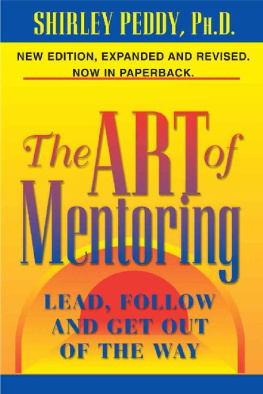

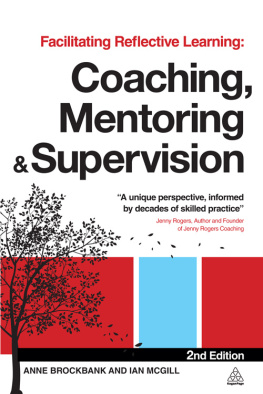





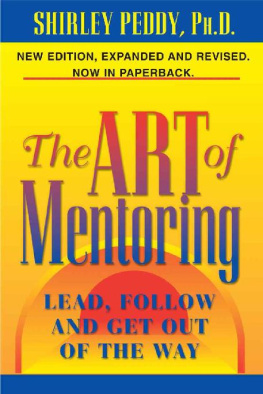
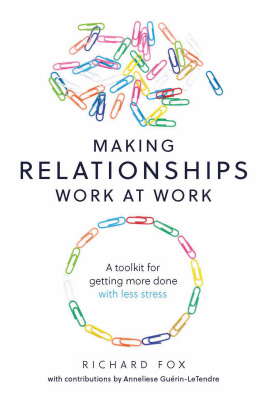

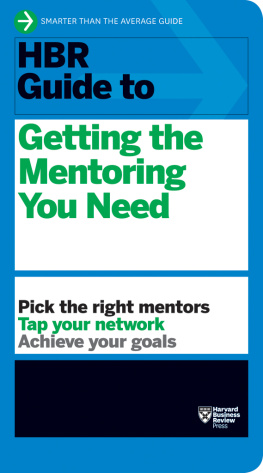


 Printed in the United States of America At Morgan Printing in Austin, Texas D EDICATION To all those who teach, role model, coach, tell stories, explain, listen, counsel, ask the right questionsto a group of one, and to those special mentors who are a continuing source of support and inspiration to me: Jody Heymann Red Peddy Donald E. Stanford George V. Sherman, Jr.
Printed in the United States of America At Morgan Printing in Austin, Texas D EDICATION To all those who teach, role model, coach, tell stories, explain, listen, counsel, ask the right questionsto a group of one, and to those special mentors who are a continuing source of support and inspiration to me: Jody Heymann Red Peddy Donald E. Stanford George V. Sherman, Jr.  Why mentoring is needed
Why mentoring is needed